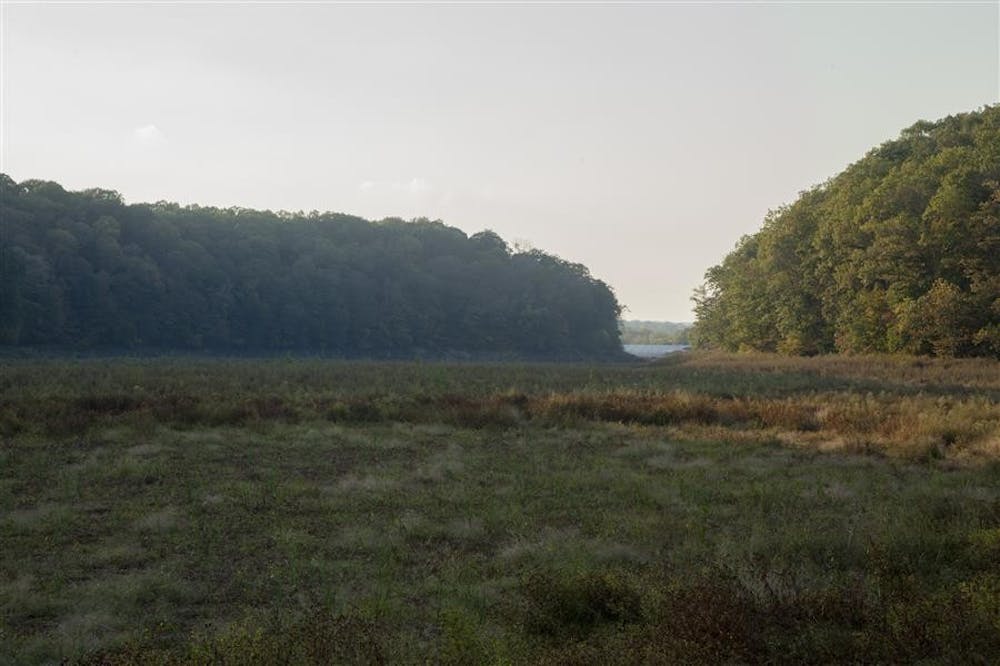After more than a year of repairs, Griffy Lake is refilling with water, and by spring 2014, it will be filled with fish.
The repair process, which addressed storm damages to the lake’s dam, began in March 2012 and was not completed until Nov. 27, 2013, said Jon Callahan, public affairs specialist for the City of Bloomington Utilities Department.
“Improvements to the dam included a new intake tower and sluice gate, improvements to the spillway and a new inboard concrete slope on the dam,” Callahan said.
As part of the repair process, the lake was drained in June 2012.
In addition to the dam repairs, the city also received a grant for a sediment removal project, which was made easier by the fact that the lake was already drained, Parks and Recreation Natural Resources Manager Steve Cotter said.
“Six thousand five hundred cubic yards of sediment were excavated out of the dry lake bed, at the east end of the lake, to create a channel from the boat dock and boat ramp to the bridge under Headley Road,” Cotter said.
Cotter said removing the sediment will make boat navigation easier and improve the habitat for fish and wildlife.
Dave Kittaka is the Indiana Department of Natural Resources fishery biologist in charge of restocking Griffy Lake with game fish.
Kittaka said restocking the lake is a yearlong process. The fish have already spawned and have been raised throughout the summer in DNR hatcheries.
“We had initially hoped to stock in October, but because of delays there was not enough water and temperatures were too cold to restock this fall,” Kittaka said.
Kittaka said his biggest concern is that some fishermen may want to illegally introduce fish to the lake, upsetting the balance between predator and prey fish.
The fish that will be introduced include largemouth bass, bluegill, redear sunfish, black crappie and channel catfish.
Kittaka said in the past the DNR has had problems managing the invasive Brazilian elodea plant in the lake.
“We think someone dumped their fish tank into the lake because it’s a popular aquarium plant,” Kittaka said. “The problem is it grows quickly and can cause imbalances in fish populations.”
Kittaka said disturbing the lake’s ecosystem by dumping fish or plants may be difficult or impossible to correct.
“If we don’t get the ratio right the first time, we could be left with an unbalanced fishery for a long time,” Kittaka said.
Follow reporter Brianna Meyer on Twitter @brimmeyer.
Griffy Lake repairs completed

Get stories like this in your inbox
Subscribe





